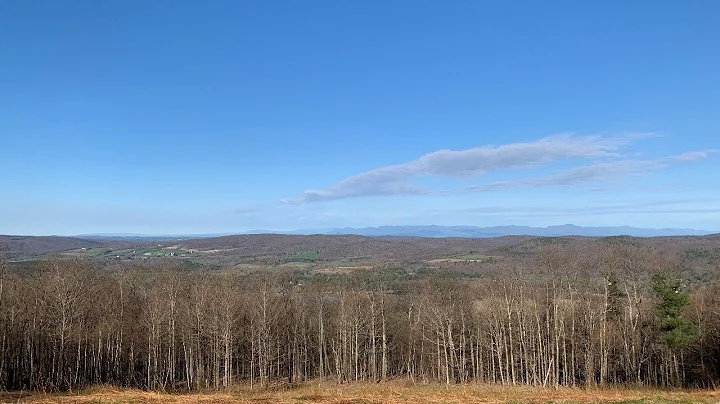Michael J Sinicropi
age ~28
from Frisco, TX
Michael Sinicropi Phones & Addresses
- Frisco, TX
- 65 Birdsong Pkwy, Orchard Park, NY 14127 • 716 662-2020
- Tuscaloosa, AL
Us Patents
-
System For Energy Recovery In A Vacuum Pressure Swing Adsorption Apparatus
view source -
US Patent:6344069, Feb 5, 2002
-
Filed:Jan 4, 2001
-
Appl. No.:09/753612
-
Inventors:James Smolarek - Boston NY
Michael John Sinicropi - Cheektowaga NY
Herbert Raymond Schaub - East Amherst NY -
Assignee:Praxair Technology, Inc. - Danbury CT
-
International Classification:B01D 53047
-
US Classification:95 96, 95101, 95102, 95130
-
Abstract:A VPSA apparatus includes a first adsorbent bed and a second adsorbent bed, a feed blower for providing a flow of a gas mixture at about atmospheric pressure to the beds, and a vacuum blower for removing a flow of gas therefrom and venting the gas to a space at atmospheric pressure. The VPSA process causes the first adsorbent bed to be poised for evacuation by the vacuum blower and concurrently, the second adsorbent bed is under vacuum conditions and is poised for pressurization by the feed blower. A single motor is coupled by a common shaft to both the feed blower and the vacuum blower and operates both. A conduit/valve arrangement is operative during at least a portion of a process time when the adsorbent beds are in pressurizing/evacuation states, respectively, to couple the feed blower to the second adsorbent bed when at vacuum and for concurrently coupling the vacuum blower to the first adsorbent bed which is to be evacuated. The feed blower is thereby caused to operate in a gas expansion mode and imparts expansion energy, via the common shaft, to the vacuum blower. During idling conditions, a valve-conduit system is controlled to enable significant reductions in pressure rise across the feed and vacuum blowers.
-
Cryogenic Refrigeration System
view source -
US Patent:6425264, Jul 30, 2002
-
Filed:Aug 16, 2001
-
Appl. No.:09/930199
-
Inventors:Kenneth Kai Wong - Amherst NY
Richard A. Novak - Naperville IL
Michael John Sinicropi - New Milford CT
Dante Patrick Bonaquist - Grand Island NY -
Assignee:Praxair Technology, Inc. - Danbury CT
-
International Classification:F25J 100
-
US Classification:62613, 62434, 62619
-
Abstract:A cryogenic refrigeration system wherein refrigeration is provided to a heat load by a warming multicomponent refrigerant fluid recirculating in a refrigeration circuit and by cryogenic liquid separately provided to the heat load in direct or indirect heat exchange with the heat load.
-
Pressure Swing Adsorption Heat Recovery
view source -
US Patent:54531128, Sep 26, 1995
-
Filed:Feb 2, 1994
-
Appl. No.:8/190426
-
Inventors:Michael J. Sinicropi - Cheektowaga NY
Timothy M. Aaron - Williamsville NY
Frederick W. Leavitt - Amherst NY
Herbert R. Schaub - E. Amherst NY
James Smolarek - Boston NY -
Assignee:Praxair Technology, Inc. - Danbury CT
-
International Classification:B01D 53047
-
US Classification:95 41
-
Abstract:Waste heat generated within a pressure swing adsorption system is effectively captured and utilized to preheat the feed gas passing to a feed gas blower for compression to the desired adsorption pressure level. The energy efficiency of the system, and overall system performance, are thereby enhanced.
-
System For Energy Recovery In A Vacuum Pressure Swing Adsorption Apparatus
view source -
US Patent:59124261, Jun 15, 1999
-
Filed:Jan 30, 1997
-
Appl. No.:8/791308
-
Inventors:James Smolarek - Boston NY
Michael John Sinicropi - Cheektowaga NY
Herbert Raymond Schaub - East Amherst NY -
Assignee:Praxair Technology, Inc. - Danbury CT
-
International Classification:B01D 53047
-
US Classification:96115
-
Abstract:A VPSA apparatus includes a first adsorbent bed and a second adsorbent bed, a feed blower for providing a flow of a gas mixture at about atmospheric pressure to the beds, and a vacuum blower for removing a flow of gas therefrom and venting the gas to a space at atmospheric pressure. The VPSA process causes the first adsorbent bed to be poised for evacuation by the vacuum blower and concurrently, the second adsorbent bed is under vacuum conditions and is poised for pressurization by the feed blower. A single motor is coupled by a common shaft to both the feed blower and the vacuum blower and operates both. A conduit/valve arrangement is operative during at least a portion of a process time when the adsorbent beds are in pressurizing/evacuation states, respectively, to couple the feed blower to the second adsorbent bed when at vacuum and for concurrently coupling the vacuum blower to the first adsorbent bed which is to be evacuated. The feed blower is thereby caused to operate in a gas expansion mode and imparts expansion energy, via the common shaft, to the vacuum blower. During idling conditions, a valve-conduit system is controlled to enable significant reductions in pressure rise across the feed and vacuum blowers.
Resumes

Michael Sinicropi
view sourceLocation:
Frisco, TX

Michael Sinicropi
view sourceLocation:
Frisco, TX

Michael Sinicropi
view source
International Experience In Business Development, Project Management And Manufacturing Process Improvement.
view sourceLocation:
Buffalo/Niagara, New York Area
Industry:
Chemicals

Michael Sinicropi
view sourceFriends:
John Daniel, Brian Kinsella, Andrea Rega, Mark Dover, Brett Campbell, Jay Forman

Michael Sinicropi
view sourceWelcome to a Facebook Page about Michael Sinicropi. Join Facebook to start connecting with Michael Sinicropi.
Classmates

Michael Sinicropi
view sourceSchools:
Blessed Trinity School Auburn NY 1967-1975
Community:
John Melanson, Cynthia Nagle, Christine Lubanski, Aaron Lupo, Laurie Gardner, Melinda Muldoon, Michael Doyle, Joe Stain, Maureen Melanson, Ann Marquart

Blessed Trinity School, A...
view sourceGraduates:
Joseph Young (1980-1989),
Christine Lubanski (1970-1975),
Michael Sinicropi (1967-1975),
Jason Leszczynski (1990-1992),
Maura Fitzgerald (1985-1991)
Christine Lubanski (1970-1975),
Michael Sinicropi (1967-1975),
Jason Leszczynski (1990-1992),
Maura Fitzgerald (1985-1991)
Plaxo

Michael Sinicropi
view sourceMeridian, IdahoBroker at Mountain Moose Brokerage MICHAEL SINICROPI
Mountain Moose Brokerage
Meridian, ID 83646
Day: (702) 493-0272
foodservice, retail grocery, and regional beverage sales... MICHAEL SINICROPI
Mountain Moose Brokerage
Meridian, ID 83646
Day: (702) 493-0272
foodservice, retail grocery, and regional beverage sales arenas,
Youtube
Myspace

Michael Sinicropi Myspac...
view sourceMichael Sinicropi's profile on Myspace, the leading social entertainment destination powered by the passion of our fans.
Get Report for Michael J Sinicropi from Frisco, TX, age ~28





